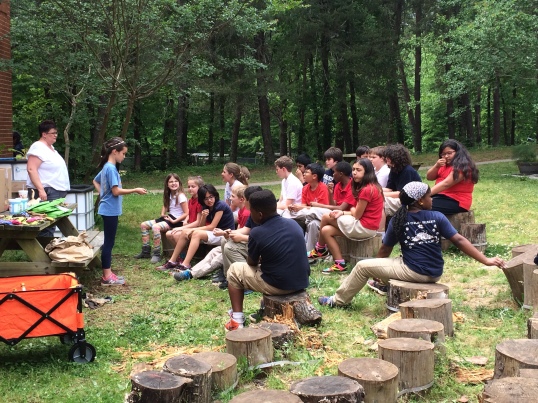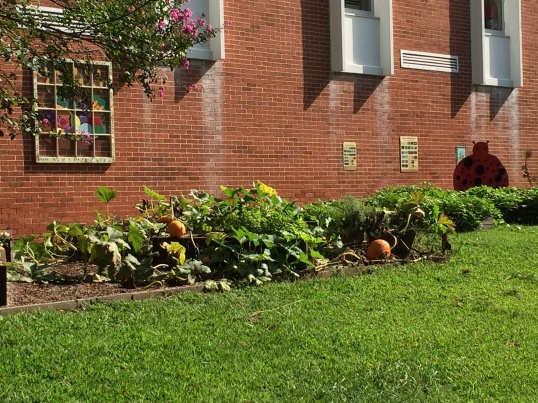One of the most exciting pieces of news yet for Chesnut’s Gardening and Farm to School programs is that in earning AdvancED STEM certification (awarded last May) the faculty chose to set Gardening as the K-1 capstone and Hydroponics as the 2nd grade capstone. STEM stands for Science, Technology, Engineering and Math, and ultimately permeates all core subjects by encouraging children to innovate and think critically, whatever the task at hand. STEM activities teach that a setback is a normal part of a work-in-progress, because students are expected to learn from their previous efforts and apply those lessons until they succeed.
Some may not at first see the connection between food production and engineering or technology, but any farmer can tell you it is most certainly a daily reality! Chesnut faculty developed our own Engineering Design Model which trains student engineers to 1. Ask a question, 2. Imagine the possibilities, 3. Plan a solution, 4. Create it using materials they select, 5. Test and Modify it, then adjust and repeat until successful.

For example, last spring when the fifth graders were out in the garden, they worked together to solve several problems surrounding irrigation. In a daisy chain of rain barrels, the fourth rain barrel had become disconnected, but was three-quarters full of water. Students had to analyze the situation, diagnose the problem (the rain barrel had shifted too far from the connector), try various solutions (pushing it back into place, first with one person, then with the strength of several), until finally finding a way to tip the barrel from side to side to take advantage of the force of the swaying water inside to generate enough force to push the barrel close enough to connect.

Next, upon going to fill up a watering can from the rain barrel, they discovered a leak in the watering can. Again, the solution process began. Ultimately they found a material to plug the hole that would hold, and allow them to use the watering can to water their newly planted radish seeds. In the radish seed planting, there was of course a math lesson, as we calculated the maximum number of rows, space 6″ apart, would fit inside our raised garden bed dimensions. And there was a social studies tie-in, because the fifth graders had been discussing World War II food shortages and the answering swell of victory gardens in the United States. Like those 1940s families, we were challenging ourselves to maximize production in a small plot of land.

While some students planted radish seeds, others were learning about the plant life cycle by tasting this science lesson. Students pulled up lettuce plants that had gone to seed and passed out lettuce leaves, which they of course found very bitter. We discussed how the chemicals inside the plant change during its life cycle, and the students theorized why a plant would turn bitter as it prepared to drop its seeds.
One visit to Chesnut Garden afforded our children access to hands-on, real world, science, math, engineering and social studies lessons. And now that our K-2 STEM capstones involve the garden and hydroponics, we are encouraged that Chesnut Garden will serve even more as a learning lab for our students. We thank our teachers for adopting it as such and look forward to sharing more reports of hands-on learning in Chesnut Garden.










 First grade teacher Ms. Radford seized on this opportunity to demonstrate the plant life cycle — a science standard — to the students, who observed the pumpkins (fruits) ripening on the plant vines. They chose one pumpkin to study its decay in Ms. Radford’s classroom all year, after which the students harvested those seeds for replanting in the Pie Garden.
First grade teacher Ms. Radford seized on this opportunity to demonstrate the plant life cycle — a science standard — to the students, who observed the pumpkins (fruits) ripening on the plant vines. They chose one pumpkin to study its decay in Ms. Radford’s classroom all year, after which the students harvested those seeds for replanting in the Pie Garden.

































